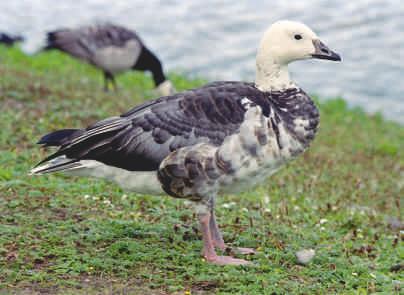Förekomst av gåshybrider i Sverige – ett naturskyddsproblem?
DOI:
https://doi.org/10.34080/os.v17.22681Nyckelord:
hybridisering, mellanartsinteraktion, häckningsframgång, Anatidae, populationsstudierAbstract
This report provides basic data about hybrid geese and mixed pairs in Sweden; combinations of species, numbers, trends and origins, which can serve as a framework for future studies. Data published in national, regional and local magazines and reports as well as unpublished observations through August 2007 have been analysed. Sightings in this report were based on the observers’ suggestion of parent species. No less than 17 species were involved in the hybrid geese sighted in Sweden. Some of the combinations of species involved the red-listed species Lesser White-fronted Goose, the nominate race of Taiga Bean Goose and Red-breasted Goose. The first combinations of species appeared in Sweden already 1918–1930s, but since the last half a century, the number of hybrid geese in Sweden shows a positive trend. Several explanations to this increasing trend is proposed but not further analysed. Among all the several theories proposed for hybridisation in geese, field data from Swedish goose haunts support at least two; the ”Best-Option-Hypothesis” and ”Interspecific mate choice following false imprinting”.
Nedladdningar

Downloads
Publicerad
Referera så här
Nummer
Sektion
Licens
Copyright (c) 2007 Hakon Kampe-Persson, Henrik Lerner

Det här verket är licensierat under en Creative Commons Erkännande 4.0 Internationell-licens.
Författaren/författarna innehar copyright för varje enskilt bidrag, men samtliga bidrag är publicerade under en Creative Commons-licens, så att vem som helst kan dela och återanvända bidraget förutsatt att copyright-innehavaren erkänns.







